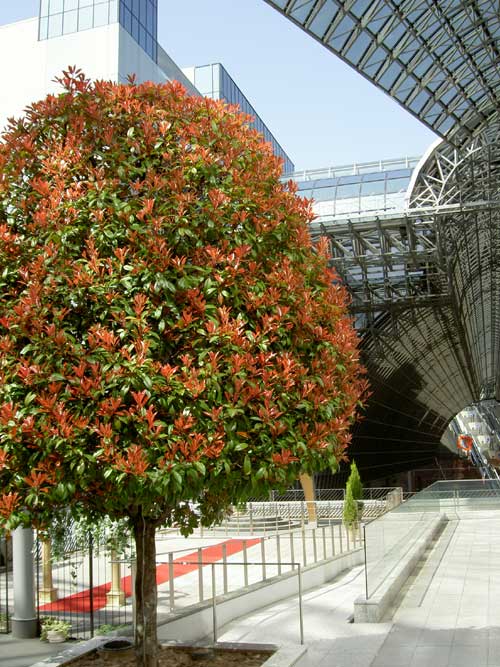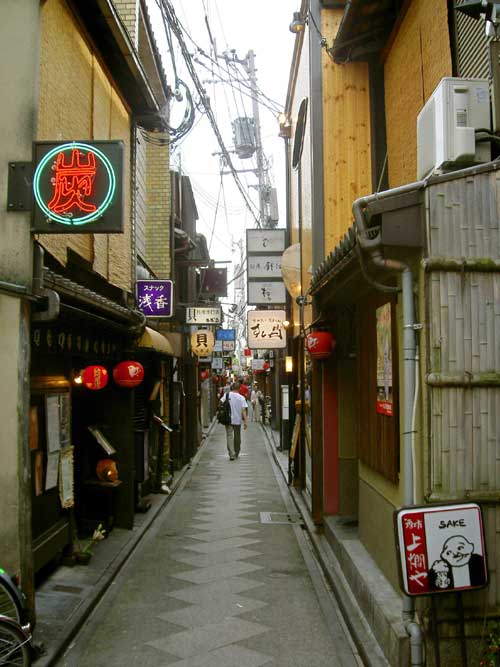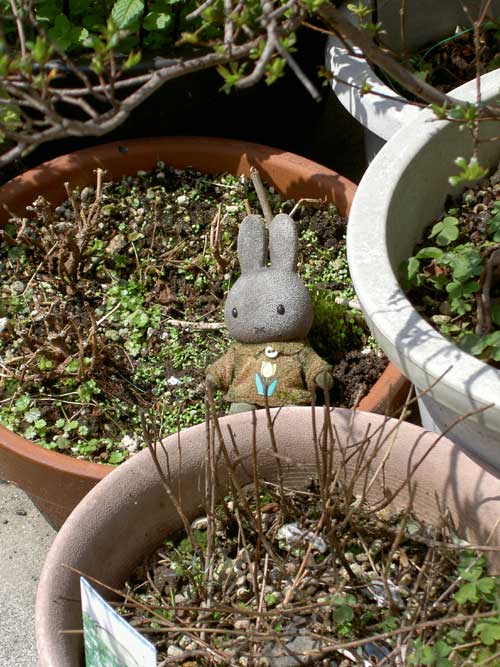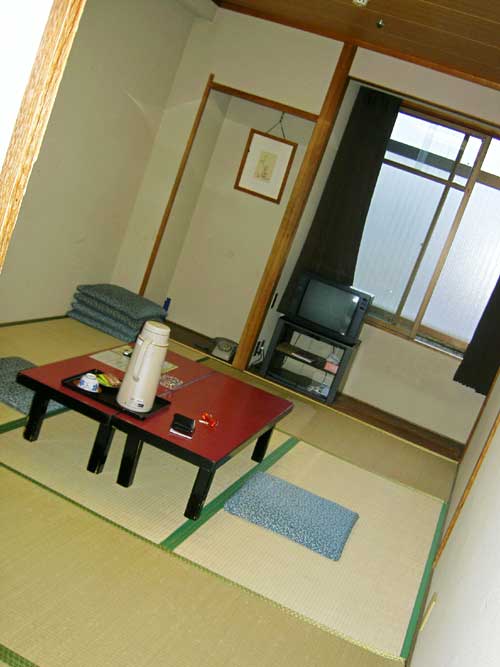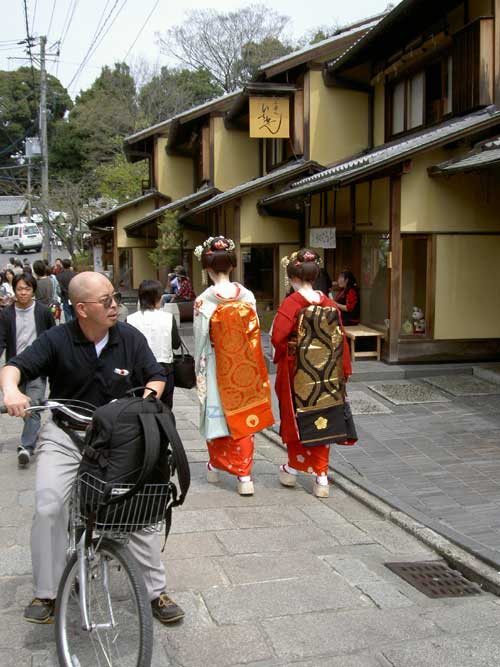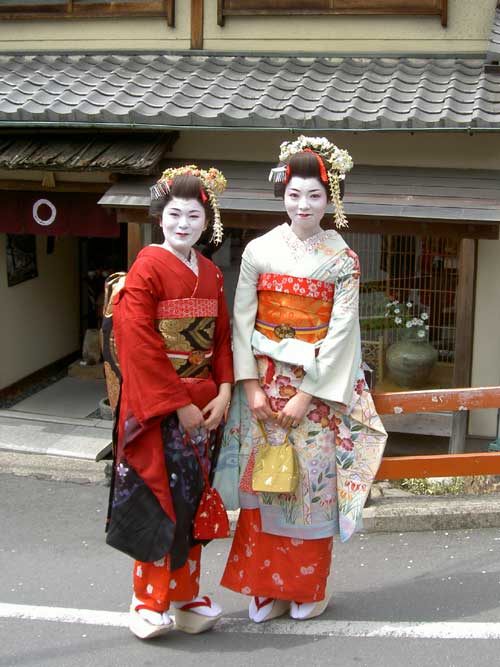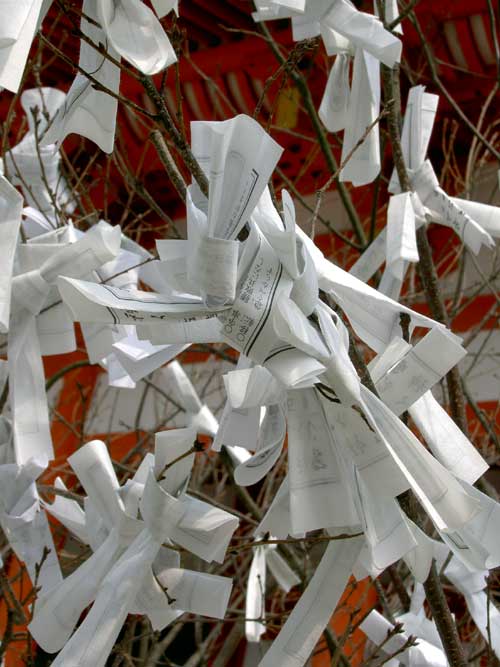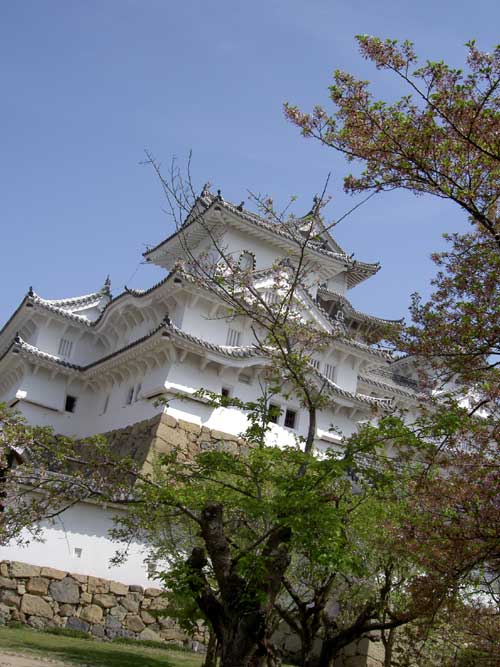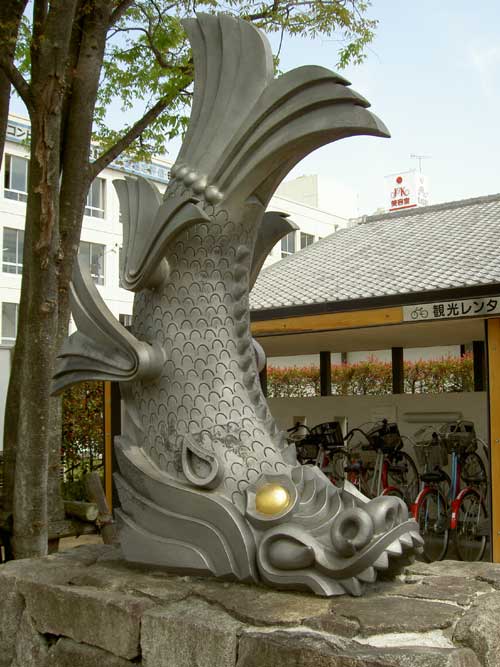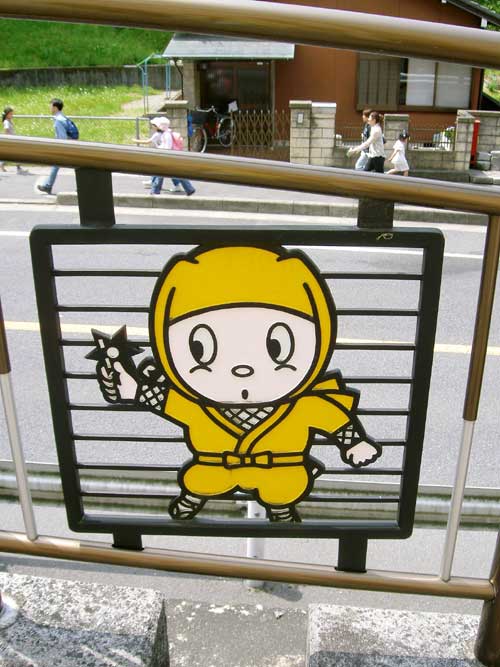




Kansai
Kansai or Kinki is the collective name for the area which consists of the cities
of Kyoto, Osaka and Kobe and their wide surrounds. As opposed to the rest of
the Japanese, the Kansaimen and -women take a more relaxed (better: less stressful)
approach to life and tend to relax a little more. This should not be too hard,
for they live in a beautiful part of Japan.
Okay, this ain't the best example of that beauty. In line with many other large
Japanese cities, Kyoto seemed to need its own observatory tower. A plain ugly
example of early-seventies bad taste, if you ask me. The fun thing is, this
picture was taken from the Kyoto Central Station directly across the street
from the Kyoto Tower, which is a very impressive, beautiful and functional hyper-modern
building.
This is one of the higher levels of the station. In the background is the upper
part of the main hall and this place is some kind of garden on the Station's
roof. A futuristic train station is the last you expect when you hear and read
about Kyoto being the cultural capital of Japan with more than a thousand temples
and shrines! Nevertheless, it's a nice place to hang around for a while.
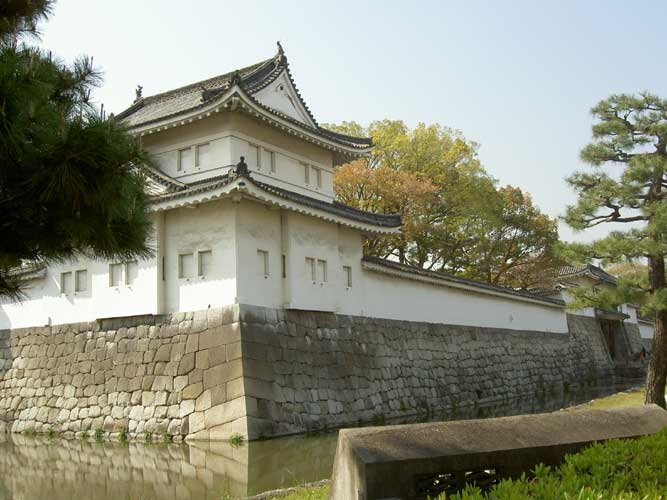
Kyoto is well-known for a lot of buildings and places, but this what I thought
one of the most beautiful: Nijo-jo. More a palace than a castle, Nijo is built
all on one floor and bears the marks of habitation by the powerful Shoguns from
Japan's Tokugawa era. And of course, no castle without an extensive garden within
its walls...
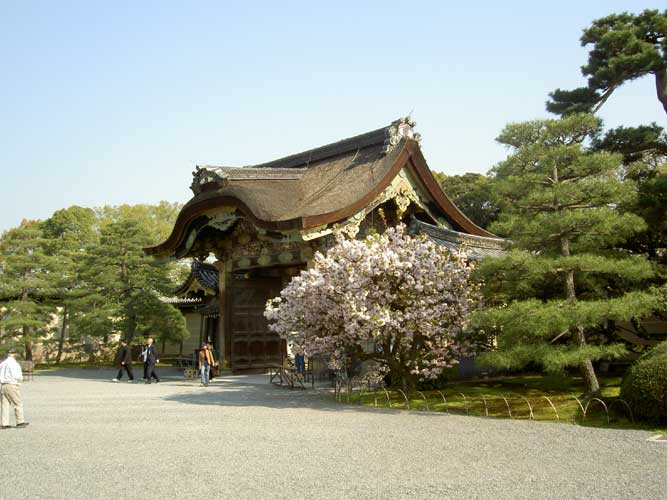
This is a gate on Nijo's grounds. As you can see, the sakura was in full bloom
when I was in Kyoto. Quite exceptional, for I had experienced the bulk of the
Hanami festival already in Tokyo. This year however, Kyoto was a slight bit
later with its blossoms than usual so I could enjoy Hanami twice!
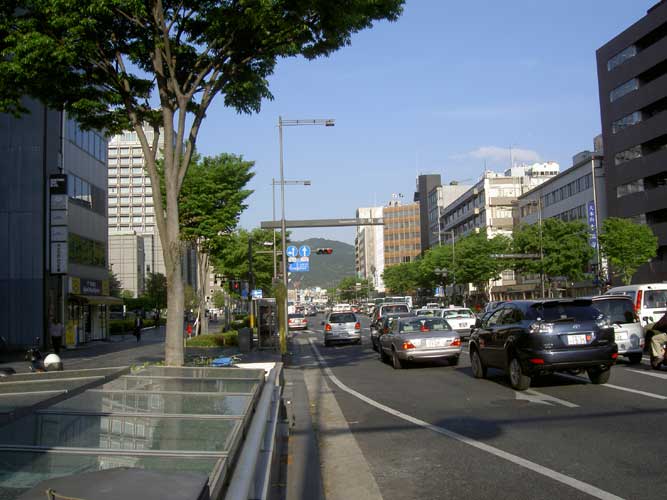
In spite of all its temples and World Heritage sites (Kinkaku-ji — Golden
Temple — and Ginkaku-ji — Silver Temple — are just among the
most well-known), Kyoto is still a modern city. The amount of skyscrapers absolutely
pales compared to Tokyo or Fukuoka, but it's still not the all-over rustic city
it may seem sometimes. As visible in the background, central Kyoto is surrounded
by hills on all but its south side.
Yet of course this rustic, Tokugawa-era Kyoto is omnipresent. This is Pontocho
alley, a long street with tiny hotels, bars and restaurants of all levels and
price classes. Together with Brian, an American I met in Tokyo, I even ran into
a very professional-sounding karaoke bar!
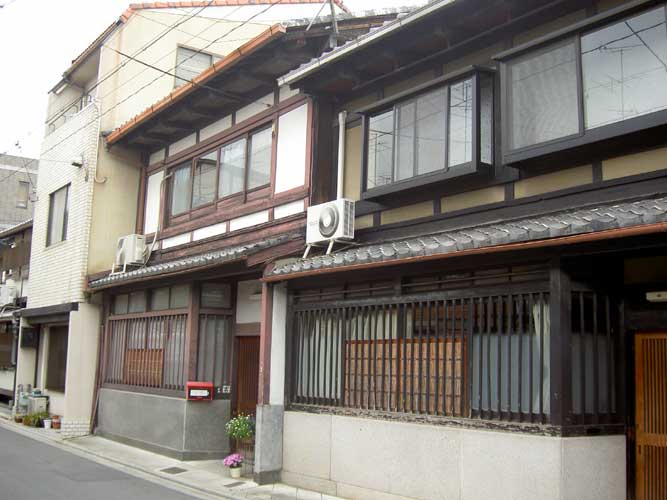
This is what the typical house in central Kyoto looks like. The further you
get towards the hills, the better and larger the houses get. Kyoto is built
in a checkerboard pattern of larger avenues and smaller streets which makes
getting lost almost impossible.
Most of these streets and alleys are so small that there is no place left for
a garden. Therefore, residents just put some potted plants in front of their
house. Miffy is thankful for the comfortable sunbathing spot, miss Takahashi!
:)
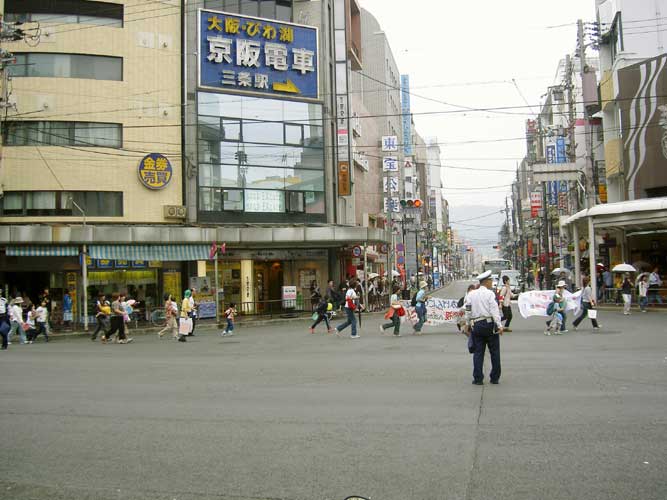
On Kawaramachi-dori between Sanjo-dori (Number Three Street) and Shijo-dori
(Number Four Street) is Kyoto's largest commercial centre. Always busy and crowded,
sometimes even with loud motor gangs, it is the veritable heart of the city.
This picture was taken at the beginning of Golden Week, a week full of national
holidays.
One of the more spacy places I stayed at in Kyoto. After more than two weeks
in a student's house in the very north of the city, I ended up in this place.
The bed is nothing more than a futon, which was stored in the cupboard when
I took te pic.
Now this what you visit Kyoto for! I had just visited Kiyomizu-dera (Freshwater
Temple) with Kurt and Caz, a British couple and Mehdi, a Moroccan doctor who
lives in Nice, when we ran into these two ladies. Lots of tourists, both Japanese
and foreign, tried to get a good shot of them. Although I wasn't overly confident
of my pronunciation, I was forward enough to ask them in Japanese whether they
would mind if I took a picture of them...
...and they spontaneously posed for me! I thought it so cool that not even the
Japanese tourists dared to ask, and they just allowed the rude gaijin ryokosha
(foreign tourist) to take this picture!
In one of Kyoto's many temples I found this dead tree with all these pieces
of paper tied to it. It was only later that I understood that the papers were
fortunes you could buy at the temple, not unlike extended versions of the things
you find in a fortune cookie. I guess that in order for the fortune to have
effect, you need to leave it at the temple and thus people tie theirs to this
tree. At least it yields a beautiful sight!
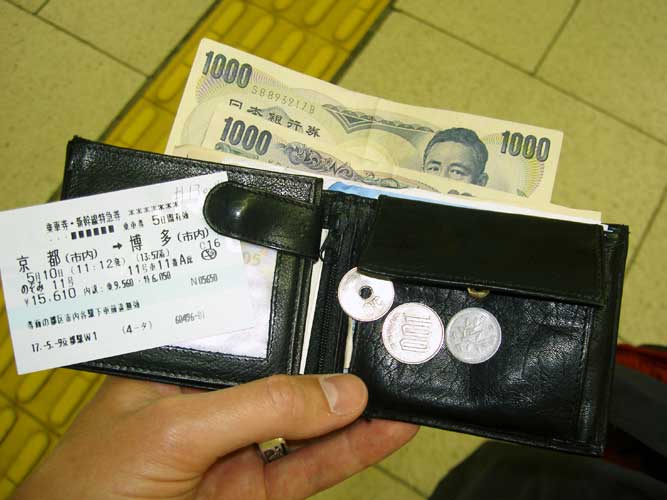
I wanted to show you the cold hard cash of Japan. As opposed to the Western
countries, almost every financial transaction in Japan is made with cash. Don't
bring your credit card to a restaurant or hotel, get some cash from a nearby
ATM and then you're all set. Since I'm kind of a cash person myself, I didn't
mind too much but I did think it strange! On the left you can see my shinkansen
(bullet train) ticket from Kyoto to Hakata. I had to buy this ticket speaking
nothing but Japanese because the guy who sold them spoke only some three words
of English. I was quite proud that I managed, I even knew how to ask from what
track the train would leave!
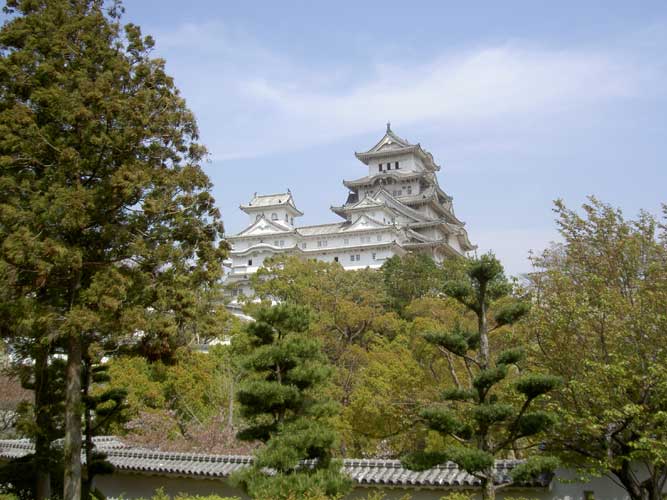
Some ninety minutes of train travel west of Kyoto is Himeji. Although Himeji
is not very large, it is very well known for the largest and most beautiful
castle in all of Japan, Himeji-jo. The castle and its gardens are marvelous
to behold. Since the complex is so big, it does't quite register that there
are actually a lot of visitors. On the top of the main donjon, I ran into a
large group of students from Nijmegen who were in Japan for their studies. It
was very nice to be able to speak Dutch again for a change!
Another view of Himeji-jo. I took some hundred pictures of the site, so I have
plenty to choose from. I won't post all of them here, for even I think that
I took way too much :)
Some weird art inspired on the castle's architecture in Himeji. This koi and
its mirror-twin were guarding a bike lot near the castle.
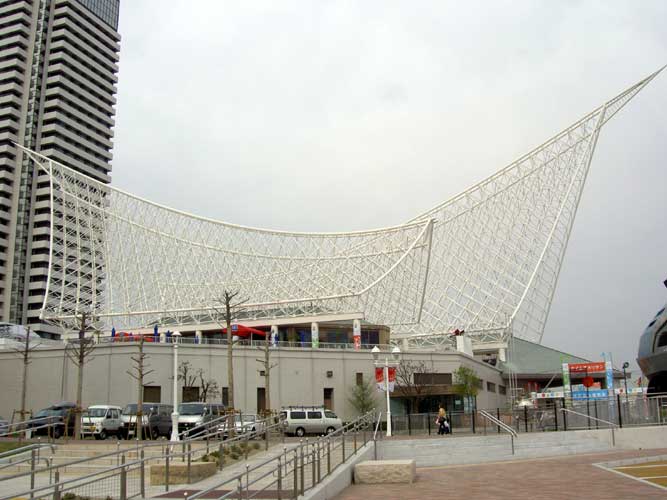
Between Himeji and Kyoto is Kobe, the city that was struck by a major earthquake
about ten years ago. No trace of that disaster is left in the city now. Kobe
is a nice city to walk in, not too crowded and with a large and beautiful Chinatown.
In the picture is the maritime museum in the harbour, which was unfortunately
closed when I visited the city.
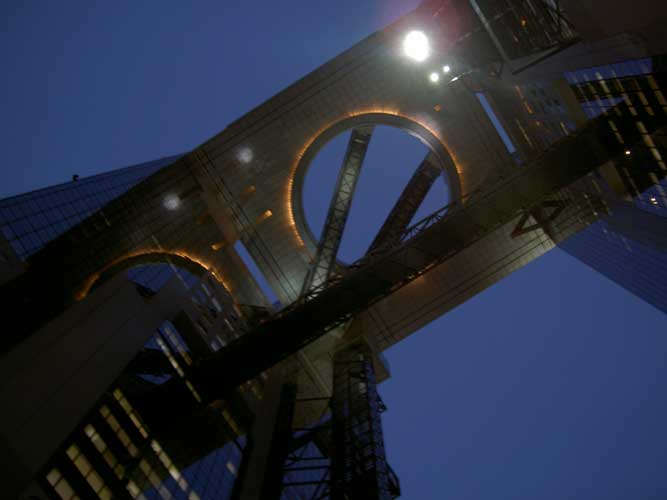
I also made a daytrip to Osaka and even stayed there for a couple of nights
during Golden Week. This picture shows a large observatory on top of a couple
of large skyscrapers. The 47th till 50th floors were accesible to the public
for a small fee and the view from above is truly breathtaking. Osaka itself
is not that special, though. It reminded me of Rotterdam in a lot of ways: characterless
modernism, huge shopping centres in which you lose your way easily and no discernible
old centre. Of course, Osaka was almost completely leveled in the Second World
War, just like Rotterdam. What the city also shares with the world's largest
port is that it has an amazing nightlife!
Together with wo girls, Louise (British) and Annalisa (Italian), I went to Iga-Ueno.
This small village seems to have been the centre of ninja training in ancient
Japan. Of course, this is exploited by the locals to lure tourists. Even the
bridges in Iga-Ueno are adorned with these super deform ninjas.
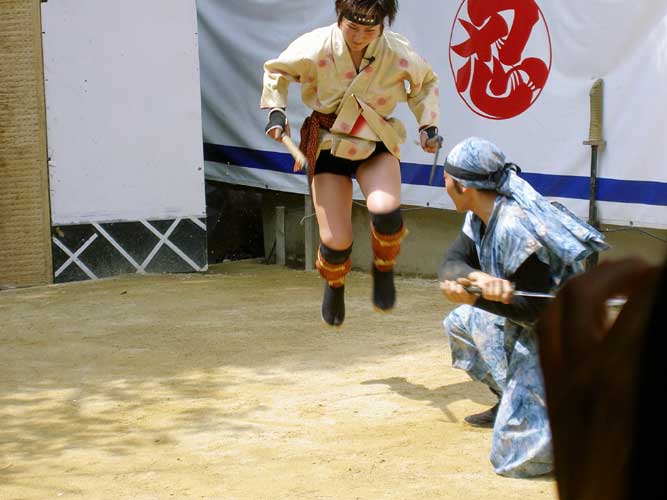
The place to be when ninjas and ninjutsu are concerned is the Ninja House in
Iga-Ueno. They even gave a demonstration of the ninjutsu skills, actually quite
impressive! Very funny was that the actions and speeches of the actors were
accompanied by a full soundtrack, complete with tension music and whoosh-whoosh
sound effects synchronised with the actor's movements. Typically Japanese camp!
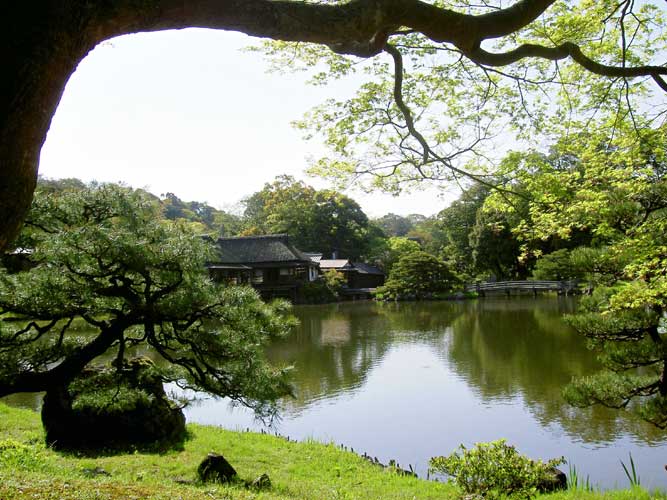
Kyoto is near Biwa-ko, Japan's largest freshwater lake about half the size of
the IJsselmeer. One day I traveled to Hikone, a small castle town on the shores
of the lake. Near the castle (which was just a smaller copy of Himeji-jo) I
ran into this breathtakingly beautiful garden. Japanese love these gardens and
I love taking pictures of them!
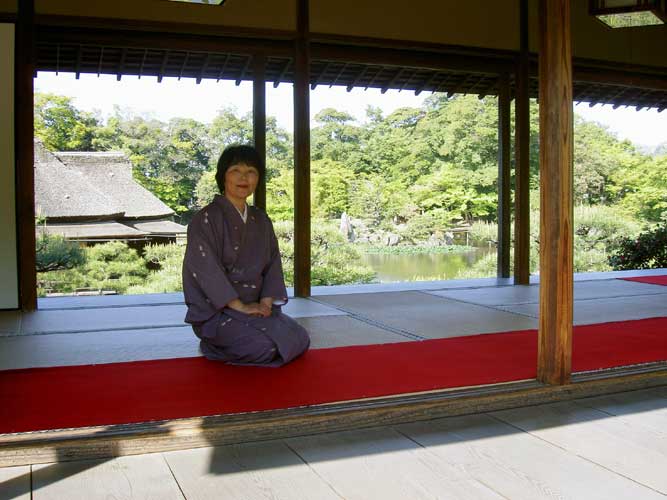
This charming lady kept a tea-house in the very same park. Although I declined
to enjoy a tea ceremony with her, she was willing to pose for this picture.
Last
updated on July 10th, 2005. Please read legal note here.
This site is best viewed at a resolution of 1024 x 768 or higher and at full
screen.


